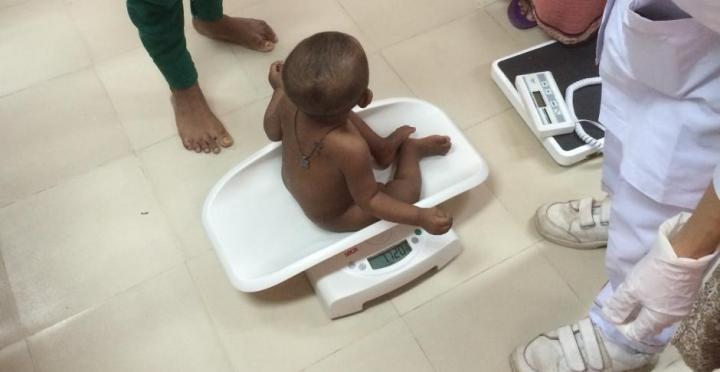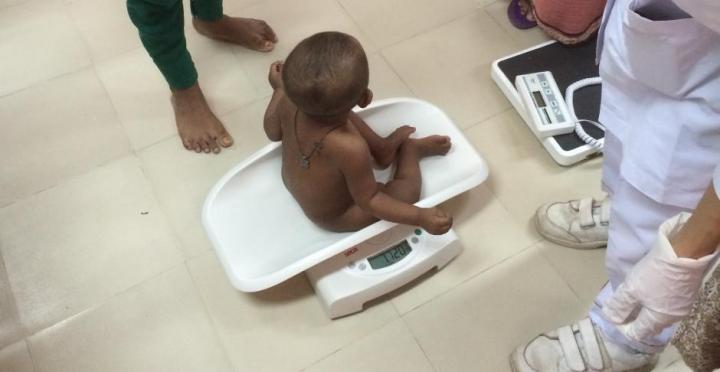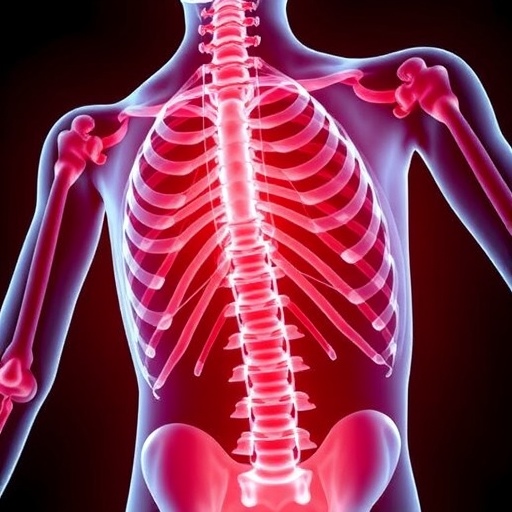
Credit: Dr. Adam Levine
PROVIDENCE, R.I. [Brown University] –To properly treat young children with severe diarrhea, caregivers in clinics long on patients and short on resources need a quick and accurate way to assess the severity of dehydration. After a study testing it with nearly 500 children in Bangladesh, the four-symptom "DHAKA" score is now the most tested method.
"The DHAKA score now has better evidence for its performance in assessing dehydration in a specifically low-income country setting than any other scale," said Dr. Adam Levine, associate professor of emergency medicine in the Warren Alpert Medical School of Brown University and lead author of the study in The Lancet Global Health. "Looking at it from an evidence-based medicine point of view, it is better than anything else out there."
In a side-by-side comparison, the study showed that DHAKA, which stands for Dehydration: Assess Kids Accurately, was a significantly better predictor of dehydration severity in children under age five than the current standard, the World Health Organization's Integrated Management of Childhood Illness (IMCI) guidelines.
Continuous improvement of diagnostic methods is vital, explained Levine, who is also a physician in the Lifespan health system, because in hospitals and clinics where intravenous fluids and beds are in limited supply, it's imperative that those treatment resources be provided only to severely dehydrated children. Children with moderate dehydration can be rehydrated orally. Moreover, mistaken overtreatment with IV fluids of only somewhat or non-dehydrated children can result in seizures or difficulty breathing.
A validated score
Levine and colleagues including a team at the International Centre for Diarrhoeal Disease Research in Dhaka, Bangladesh, derived the DHAKA score in 2014 by analyzing the cases of 770 children with diarrhea due to cholera and other serious intestinal infections. The researchers statistically determined which clinical signs at intake best predicted dehydration severity. They found four such symptoms that a nurse or doctor could observe within two minutes to make an accurate diagnosis:
- General appearance: Is the child restless or irritable, or lethargic or unconscious?
- Breathing: Is it normal or deep?
- Skin pinch: After a pinch, does skin snap right back or respond slowly, or very slowly?
- Tears: Does the child produce a normal volume, less than normal or none at all?
When applied retrospectively to the patients, the DHAKA score showed significant accuracy, sensitivity and specificity in identifying which child had no dehydration, moderate dehydration or severe dehydration. The definitive measure is made by comparing a child's weight at intake and after full rehydration.
In the new study, Levine and his team returned to Dhaka in 2015 to validate the score by testing its predictive value with an entirely new population of 496 patients. This was a crucial step to determine whether the method would work for any group of patients, not just the ones from whom it was derived. Nurses employed both the DHAKA score and IMCI algorithm when new patients arrived.
DHAKA performed well. Each additional point on the 0 to 12 scale predicted a 0.6 percent increase in dehydration and a 1.4-fold increase in the odds of some or severe dehydration. On a statistical measure of accuracy where 0.5 is no better than chance and 1 is perfect, DHAKA rated 0.82 while IMCI rated 0.76.
"Not only is this the first score to be derived and validated in a low-income country setting, but the DHAKA study is also the largest study ever of dehydration assessment of kids anywhere," Levine said. "If you take the derivation and validation studies together with more than 1,200 children, that's more than all of the children who have been involved in every other study of every other dehydration scale ever assessed in the developing or the developed world."
Levine plans one more set of tests that he expects will be necessary before DHAKA can earn the WHO's endorsement as a new diagnostic standard for use in clinics in resource-limited settings. Next spring, as cholera makes its grim annual return to Bangladesh, he plans to test it in rural clinics where the question will be whether DHAKA is easy enough to use accurately when there isn't the same degree of training and experience as at the center in Dhaka.
###
In addition to Levine, the study's other authors are Dr. Justin Glavis-Bloom, Dr. Payal Modi, Sabiha Nasrin, Bita Atika, Soham Rege, Sarah Robertson, Christopher Schmid and Dr. Nur Alam.
The National Institutes of Health Fogarty International Center funded the research (grant: 1K01TW009208-01A1).
Media Contact
David Orenstein
[email protected]
401-863-1862
@brownuniversity
http://www.brown.edu/Administration/News_Bureau





